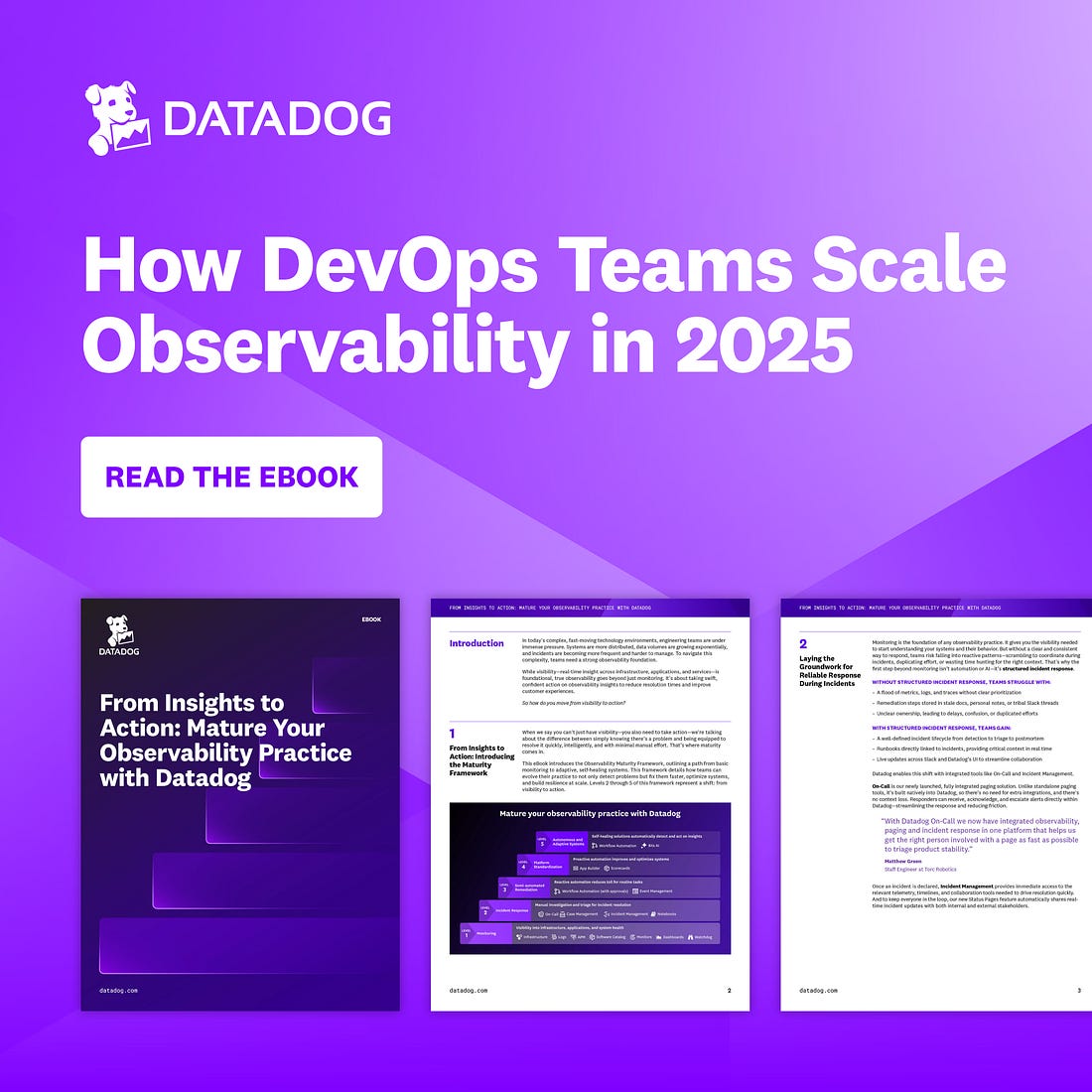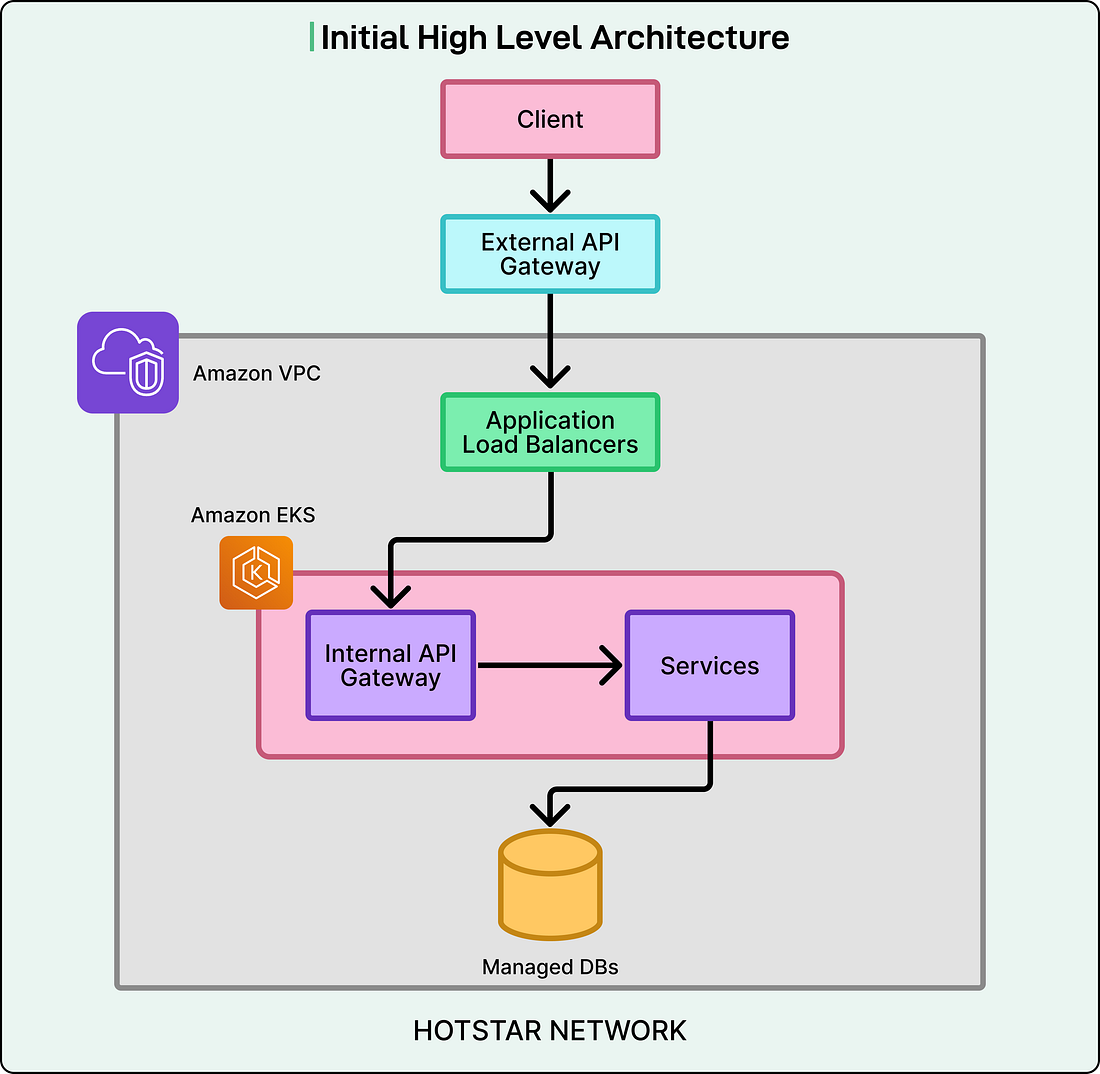|
How DevOps Teams Scale Observability in 2025 (Sponsored)
Today’s systems are getting more complex, more distributed, and harder to manage. If you’re scaling fast, your observability strategy needs to keep up. This eBook introduces Datadog’s Observability Maturity Framework to help you reduce incident response time, automate repetitive tasks, and build resilience at scale.
You’ll learn:
How to unify fragmented data and reduce manual triage
The importance of moving from tool sprawl to platform-level observability
What it takes to go from reactive monitoring to proactive ops
Disclaimer: The details in this post have been derived from the details shared online by the Disney+ Hotstar (now JioHotstar) Engineering Team. All credit for the technical details goes to the Disney+ Hotstar (now JioHotstar) Engineering Team. The links to the original articles and sources are present in the references section at the end of the post. We’ve attempted to analyze the details and provide our input about them. If you find any inaccuracies or omissions, please leave a comment, and we will do our best to fix them.
In 2023, Disney+ Hotstar faced one of the most ambitious engineering challenges in the history of online streaming. The goal was to support more than 50 to 60 million concurrent live streams during the Asia Cup and Cricket World Cup. These are events that attract some of the largest online audiences in the world. For perspective, before this, Hotstar had handled about 25 million concurrent users on two self-managed Kubernetes clusters.
To make things even more challenging, the company introduced a “Free on Mobile” initiative, which allowed millions of users to stream live matches without a subscription. This move significantly expanded the expected load on the platform, creating the need to rethink its infrastructure completely.
Hotstar’s engineers knew that simply adding more servers would not be enough. The platform’s architecture needed to evolve to handle higher traffic while maintaining reliability, speed, and efficiency. This led to the migration to a new “X architecture,” a server-driven design that emphasized flexibility, scalability, and cost-effectiveness at a global scale.
The journey that followed involved a series of deep technical overhauls. From redesigning the network and API gateways to migrating to managed Kubernetes (EKS) and introducing an innovative concept called “Data Center Abstraction,” Hotstar’s engineering teams tackled multiple layers of complexity. Each step focused on ensuring that millions of cricket fans could enjoy uninterrupted live streams, no matter how many joined at once.
In this article, we look at how the Disney+ Hotstar engineering team achieved that scale and the challenges they faced.
Get the Compliance for Startups Bundle from Vanta (Sponsored)
To scale your company, you need compliance. And by investing in compliance early, you protect sensitive data and simplify the process of meeting industry standards—ensuring long-term trust and security.
Vanta helps growing companies achieve compliance quickly and painlessly by automating 35+ frameworks—including SOC 2, ISO 27001, HIPAA, GDPR, and more.
And with Vanta continuously monitoring your security posture, your team can focus on growth, stay ahead of evolving regulations, and close deals in a fraction of the time.
Start with Vanta’s Compliance for Startups Bundle, with key resources to accelerate your journey.
Step-by-step compliance checklists
Case studies from fast-growing startups
On-demand videos with industry leaders
Architecture Overview
Disney+ Hotstar serves its users across multiple platforms such as mobile apps (Android and iOS), web browsers, and smart TVs.
No matter which device a viewer uses, every request follows a structured path through the system.
When a user opens the app or starts a video, their request first goes to an external API gateway, which is managed through Content Delivery Networks (CDNs).
The CDN layer performs initial checks for security, filters unwanted traffic, and routes the request to the internal API gateway.
This internal gateway is protected by a fleet of Application Load Balancers (ALBs), which distribute incoming traffic across multiple backend services.
These backend services handle specific features such as video playback, scorecards, chat, or user profiles, and store or retrieve data from databases, which can be either managed (cloud-based) or self-hosted systems.
Each of these layers (from CDN to database) must be fine-tuned and scaled correctly. If even one layer becomes overloaded, it can s


